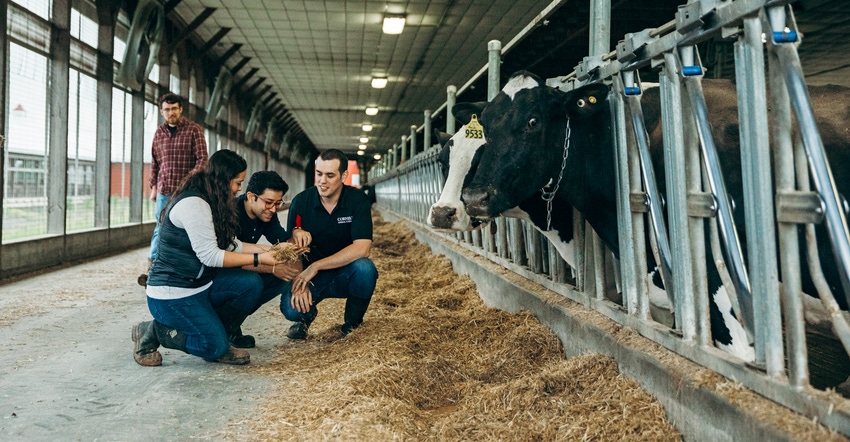
What can cows eat that can reduce their methane emissions? The building of four respiration chambers at Cornell University, the first of their kind in the country, will help answer that question.
The university recently got a $355,000 donation from Cargill and a $200,000 donation from the Genesee Valley Regional Market Authority to construct four respiration chambers in a large-ruminant facility adjacent to Morrison Hall on campus.
Joe McFadden, associate professor of animal science at Cornell, says the respiration chambers will be used to find out what feeds can be fed to cows to reduce methane emissions, and then work with companies and the industry to come up with formulations and nutritional approaches to achieve those reductions.
“And so to do that you have to have specialized equipment to accurately measure methane that’s emitted from cows,” McFadden says. Other ways of measuring cow emissions already exist, such as the GreenFeed machine by C-Lock, but respiration chambers, he says, are the “gold standard.”
“We will bring the cows to the facility and work with them right on the Cornell campus,” he says.
How it works
McFadden says the plan is to do feeding trials on cows for several weeks, then bring them into the chambers for up to a week. While in these chambers, researchers will measure, in real time, methane, carbon dioxide, ammonia and other gas emissions from the animals, and be able to quantify how much the animals emit throughout the day.
The respiration chamber works by measuring all the gases that come in, all the air the cows breathe, and then collecting and trapping the gases that are emitted.
The climate-controlled rooms will be made of stainless steel with glass windows, and each unit will be large enough to hold one cow, a couple of sheep or multiple chickens.
“The other things about these chambers that makes them unique is you can measure oxygen consumption,” McFadden says. “And so we measure the amount of oxygen that goes into the chamber, and then we know based on the amount of carbon dioxide that the animal produces and the amount of oxygen that is leaving the chamber, which will be less than entered the chamber.
“When you know that information, you can actually calculate something that’s called heat production. To understand how much heat a cow produces helps us better understand how she uses energy from the diet, and when we know about energy and how she uses energy to make milk, we can then find ways to improve the efficiency of milk production. And so she uses more of that dietary energy to make milk and … reduces the amount of waste.”
Data from the system will be used to update Cornell’s nutritional modeling software that helps farmers and nutritionists predict animal feed requirements. The software, he says, is used to feed about 75% of cows in New York state and 65% of cows in North America.
“What you can do is you can evaluate the effects of different feeds, different diets, different additives on milk production to be able to enhance the ability to predict the nutrient requirements for a specific cow,” McFadden says. “You can put different things in this model, stage of lactation, age, environment that the cow is living in, and it can fairly accurately calculate the nutrient requirements to make a certain amount of milk. Then they can know what feeds to feed, at what time and maximize efficiency. And these chambers are going to help us improve that model.”
Potential effects
It is estimated that about 4% of greenhouse gases are emitted from livestock and that 1% are emitted from dairy cattle, although estimates vary, according to an article written in Cornell Chronicle.
McFadden says most of the methane a cow produces comes from ruminal fermentation — bugs in the rumen that generate methane gas.
Certain compounds and feed additives can suppress the fermentation process, like supplemental fats and feeding seaweed, he says.
The respiration chambers will be built and installed next year by No-Pollution Industrial Systems, an engineering firm based in Scotland. McFadden says the plan is for the chambers to be operational by fall 2022.
About the Author(s)
You May Also Like






